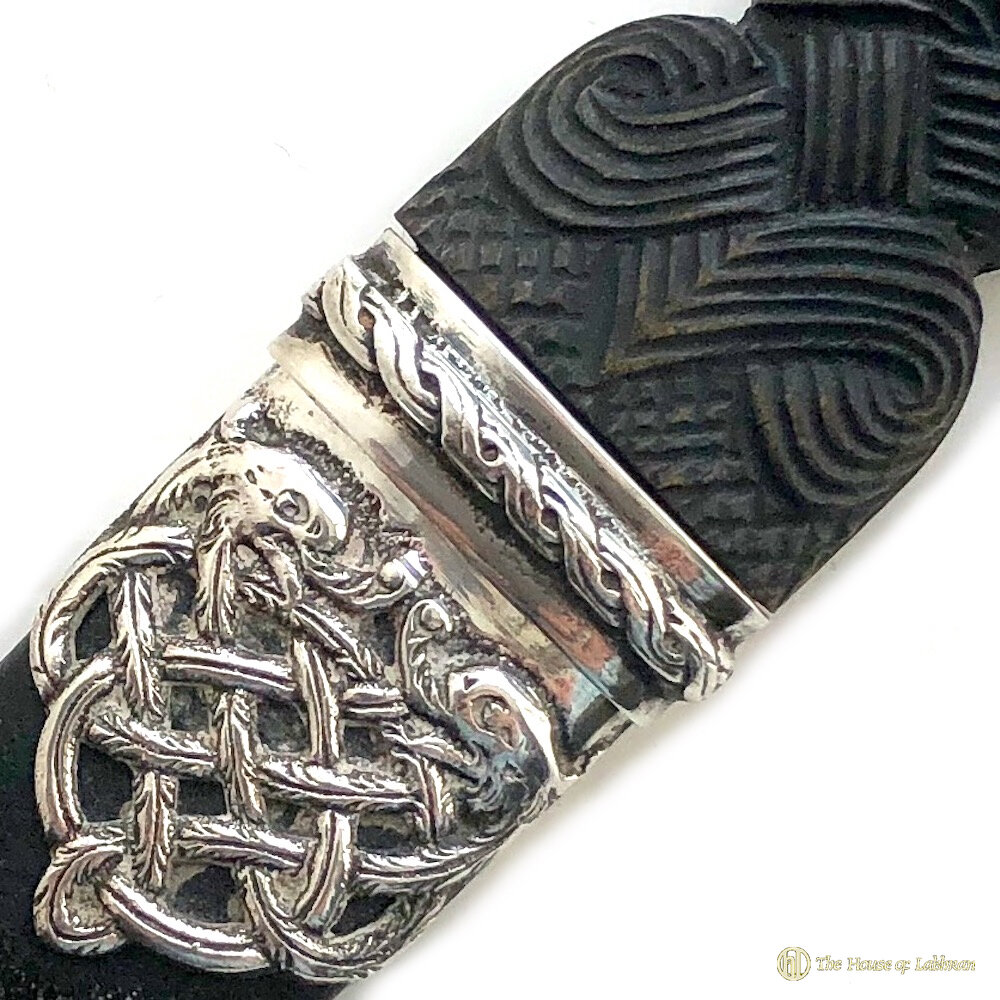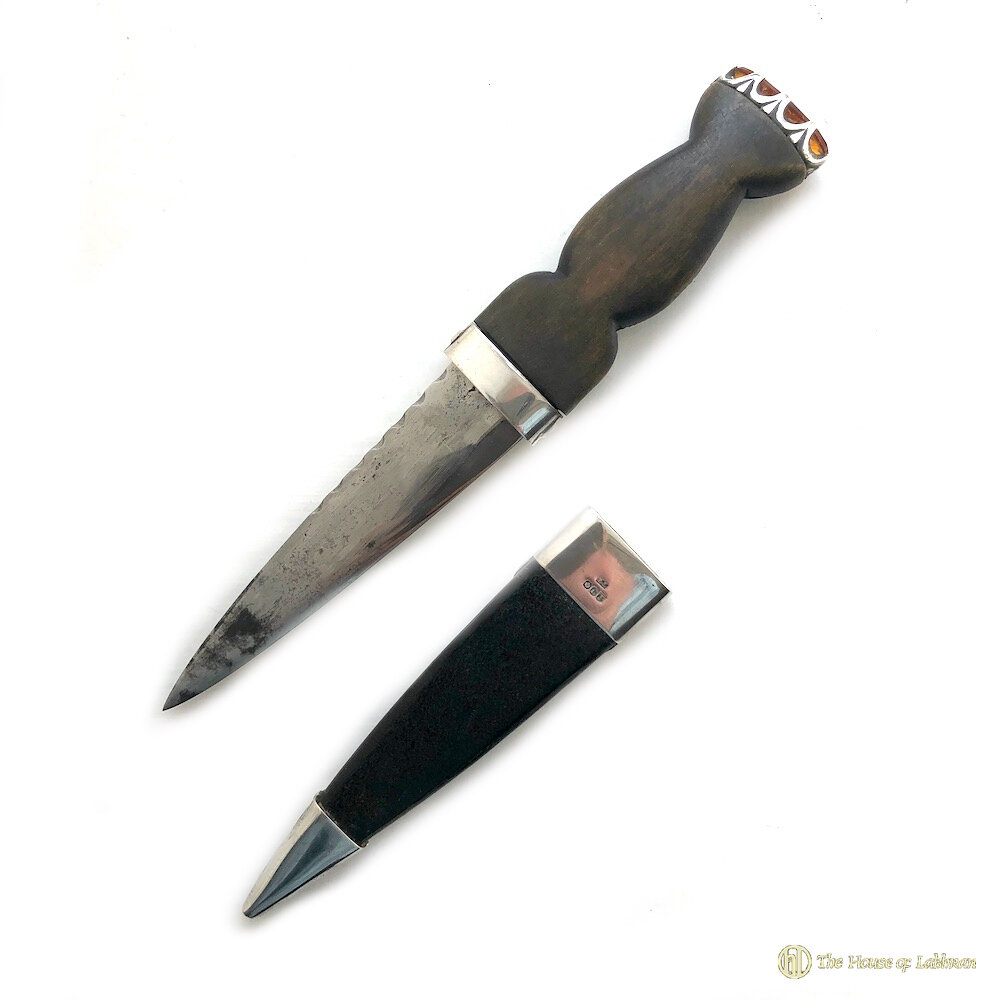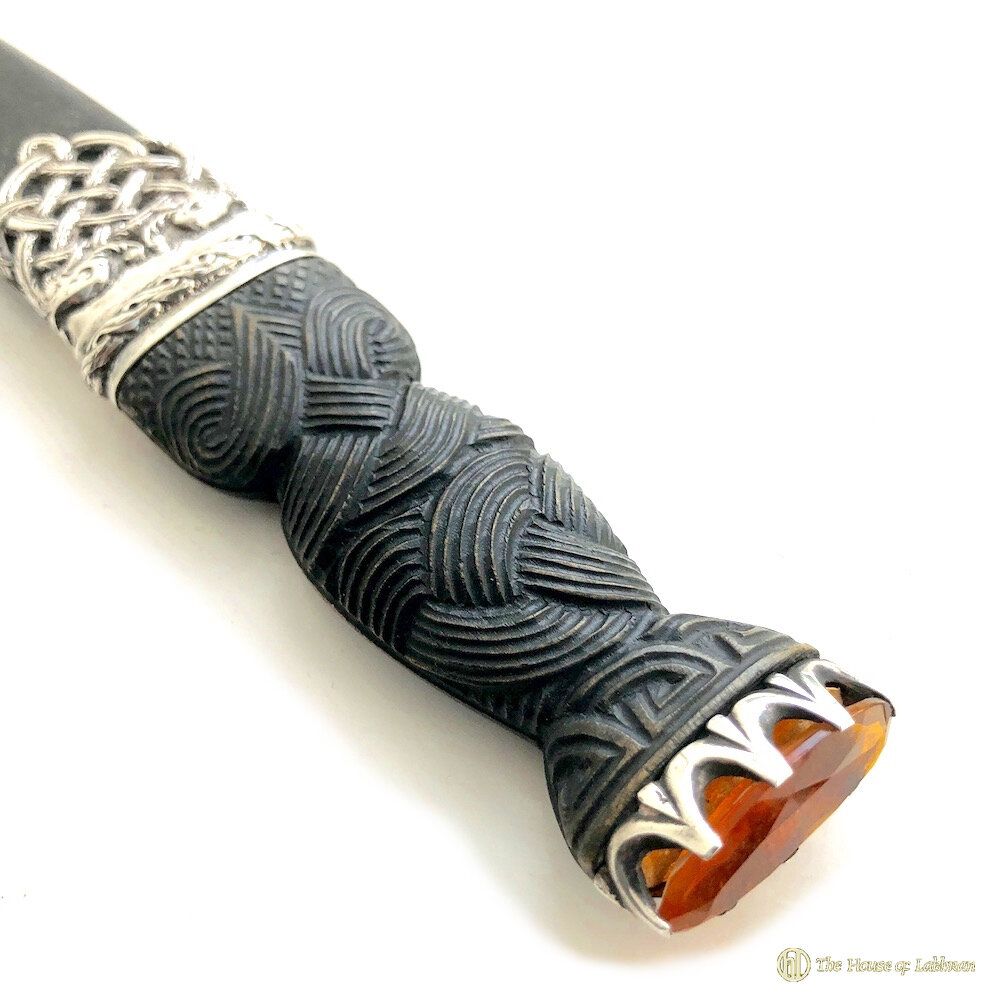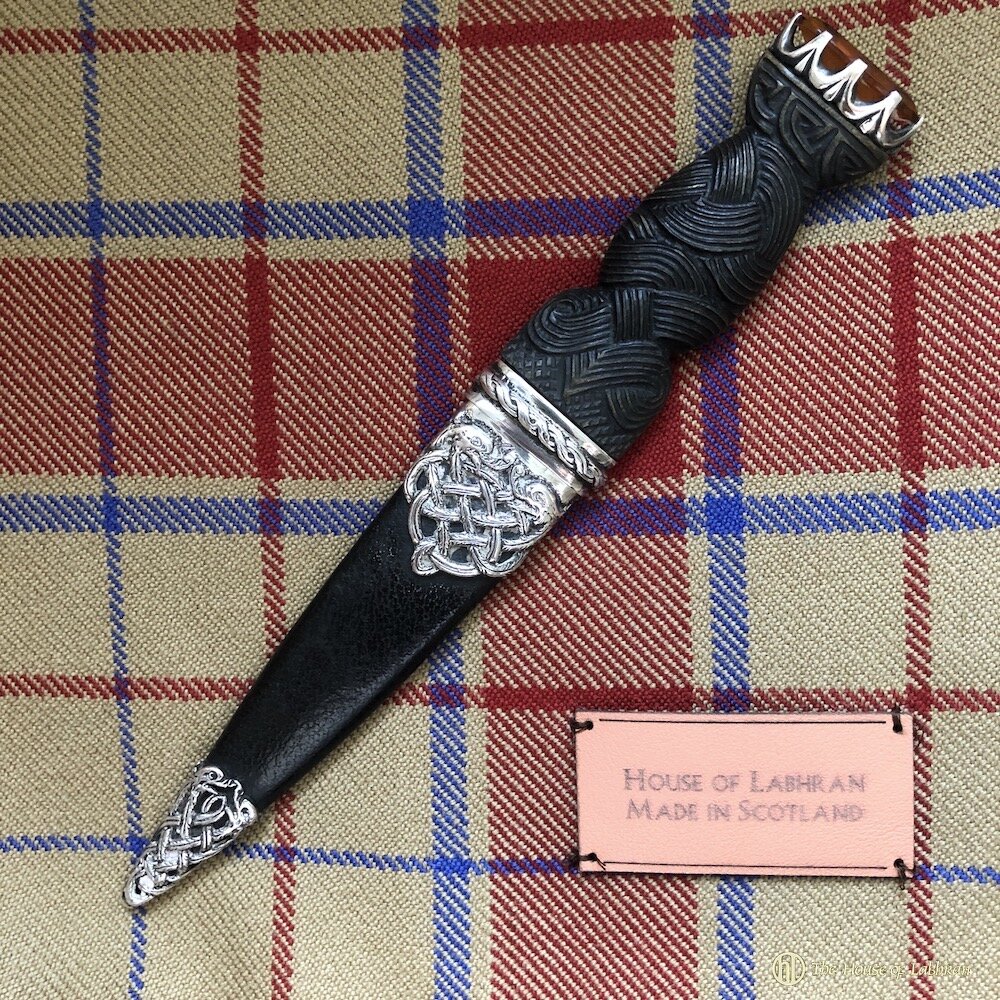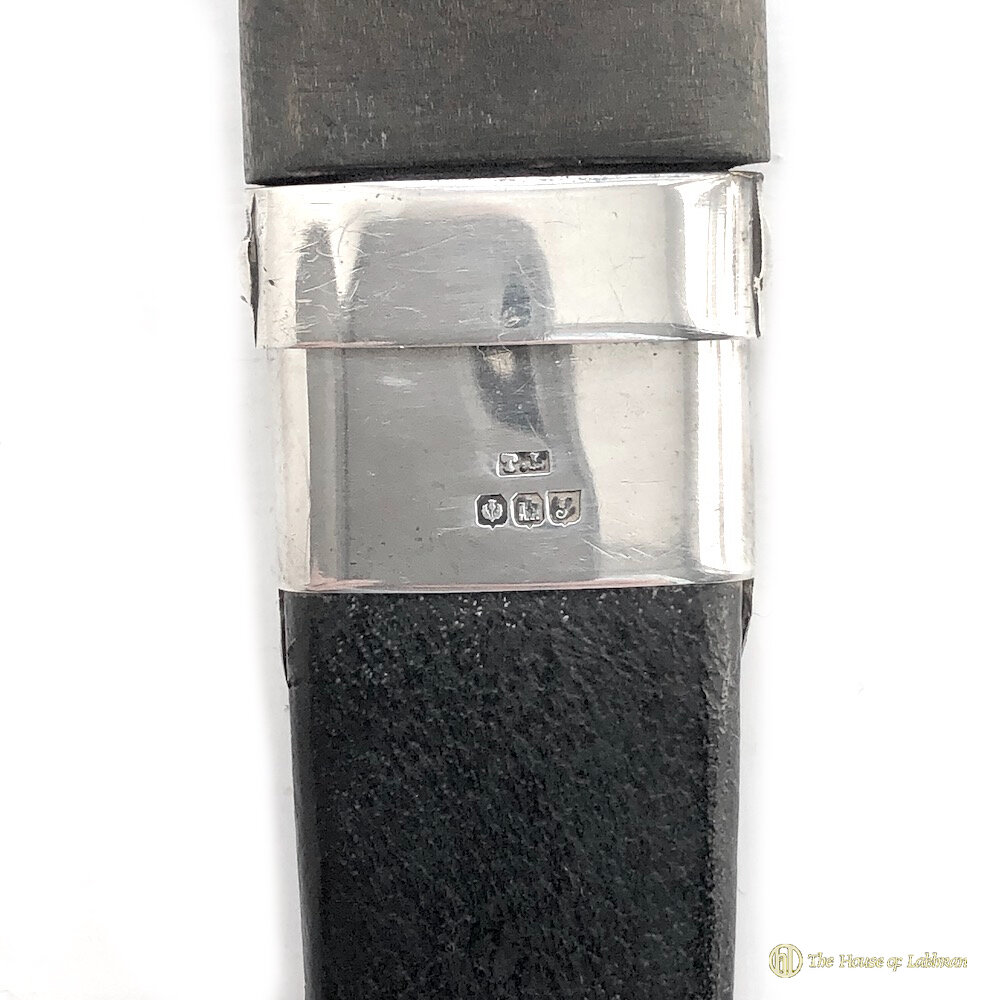1948 Silver Sgian Dubh Vintage Edinburgh – Zoomorphic Design
1948 Silver Sgian Dubh Vintage Edinburgh – Zoomorphic Design
Zoomorphic design traditions - Wood carving at Urnes Stave Church in Norway
Fine Scottish antique sgian dubh featuring a stunning zoomorphic design engraving complemented by a beautifully carved rope pattern horn hilt and a stone mounted top, showcasing exquisite craftsmanship. This timeless piece is in good, used vintage condition, adding a touch of traditional Scottish charm to any Highland dress ensemble.
Hallmarked 1948 Thomas Kerr Ebbutt Edinburgh
Thomas Kerr Ebbutt, a Scottish manufacturing jeweller based in St. David’s Square, Edinburgh, dedicated his craft to creating exquisite Highland Dress accoutrements, beginning his passion in 1896 until his passing in 1921. His legacy of intricate and traditional Scottish adornments continues to inspire and captivate enthusiasts of Highland attire to this day.
His company, known for its exceptional craftsmanship and timeless designs, remained in operation until 1977 when it was acquired by the prestigious Hamilton & Inches. The exquisite sgian dubhs created by him are renowned for their unparalleled beauty and unwavering commitment to top-notch quality craftsmanship.
Zoomorphic Design in Celtic Arts & Crafts
The word zoomorphism derives from the Greek, meaning "animal", and "shape" or "form". In the context of art.
Much of the extensive Celtic artistic tradition of interlaced design, known as Celtic knot work, not only showcases the intricate patterns but also incorporates stylized representations of animals. These animals are skillfully integrated into the interlaced designs, using their heads, limbs, bodies, tongues, and tails, contributing significantly to the rich tapestry of Celtic heritage.
Celtic art shows a remarkable affinity with Viking, Germanic, Romanesque, and Eastern European artistic styles, revealing a complex web of shared influences that interconnect with each of these rich cultural traditions.
The great Celtic gospel manuscripts of the early medieval period are often decorated with beasts and birds, many of which are not easily recognized species. The imagination and beauty expressed in the illuminated pages of the Book of Kells in Ireland.
In the Scottish tradition the zoomorphic designs followed from and merged with the early Pictish designs and was used to ornament a wide range of decorative arts. Stone carvings on early churches and wood carvings on musical instruments with mythical qualities like the traditional harp became popular.
In the workshops of skilled silversmiths, the intricate designs have long been carefully applied to embellish a variety of items with silver and brass. These include adorning dirks, sgian dubhs, plaid brooches, sporran cantles, belt buckles, and various fittings. This enduring tradition, spanning over 1500 years, remains a significant part of craftsmanship to this day.




